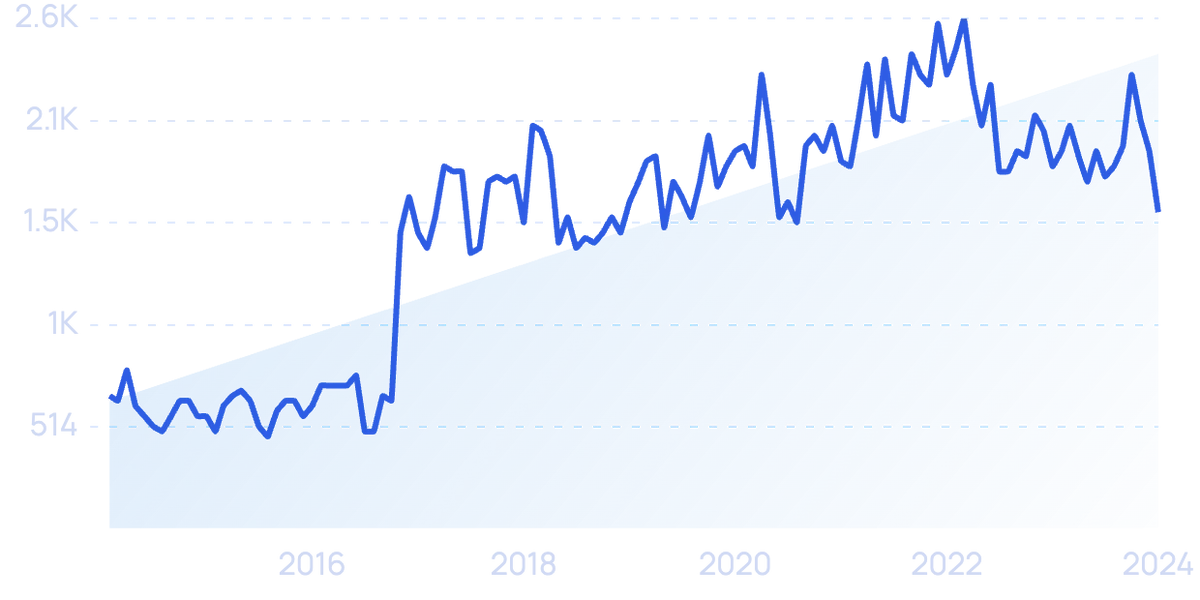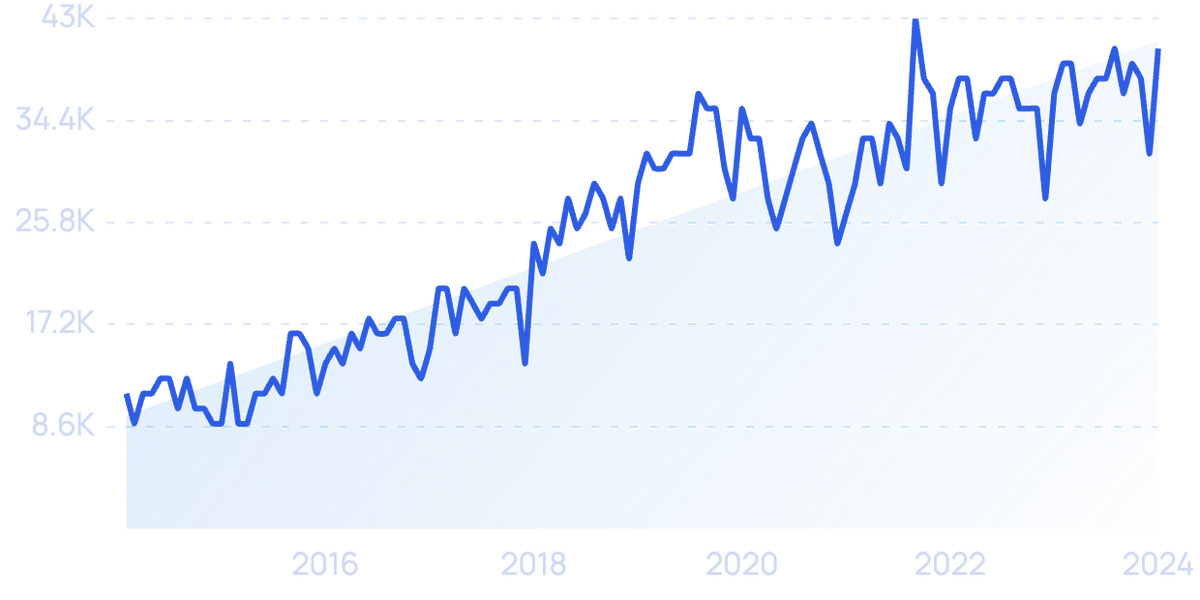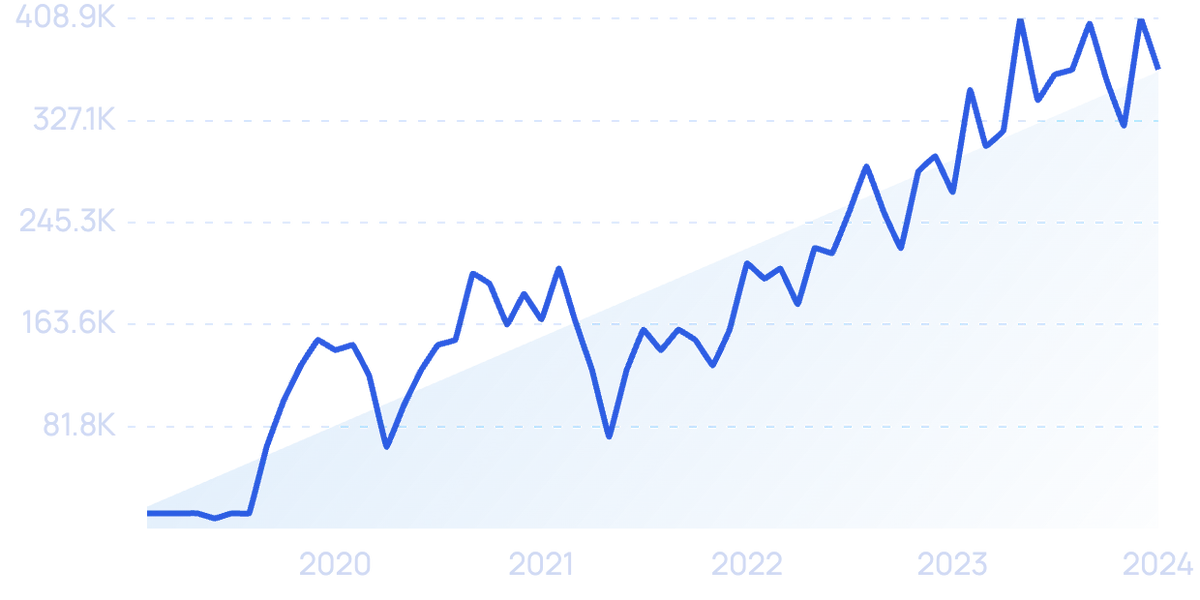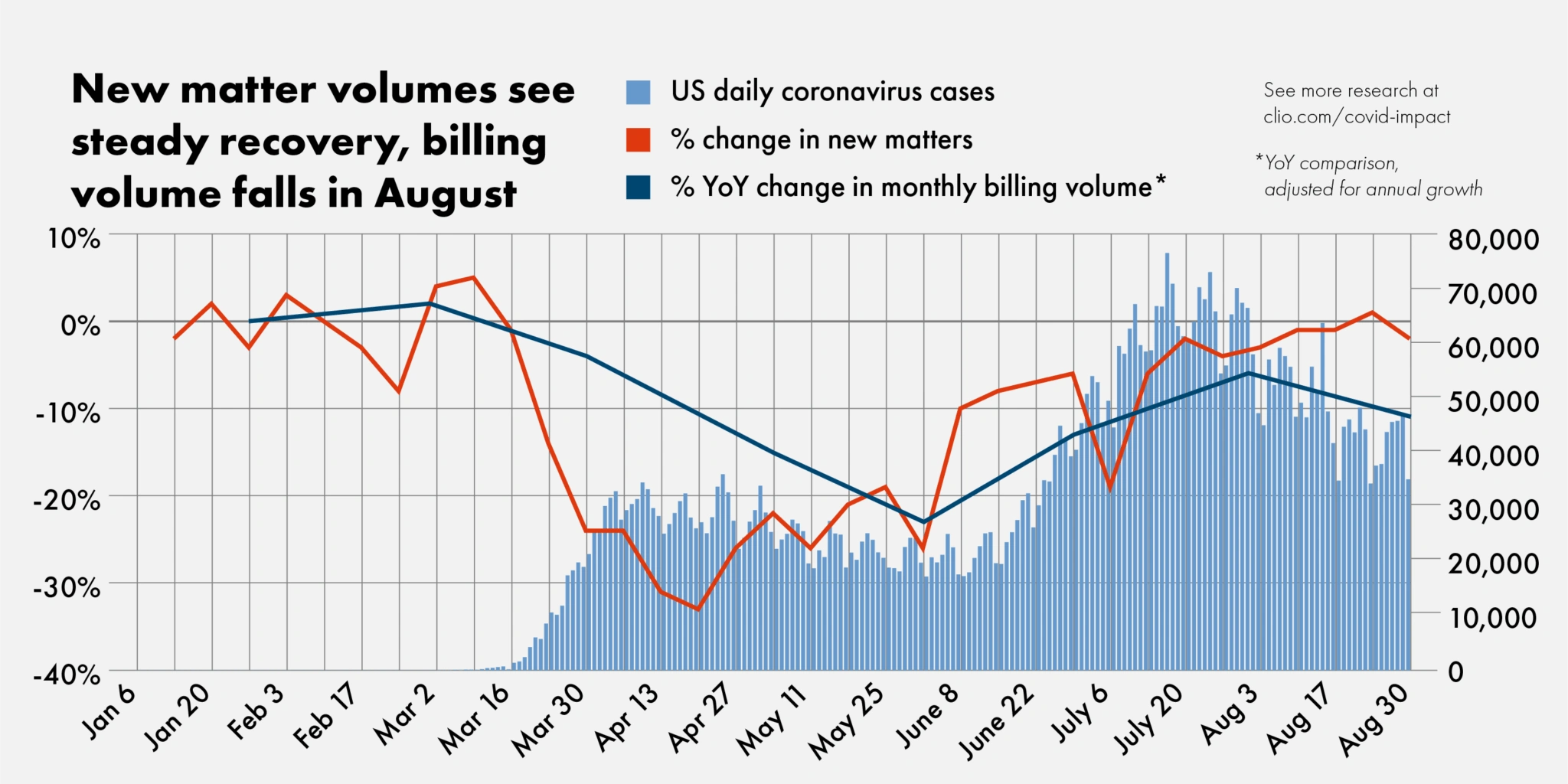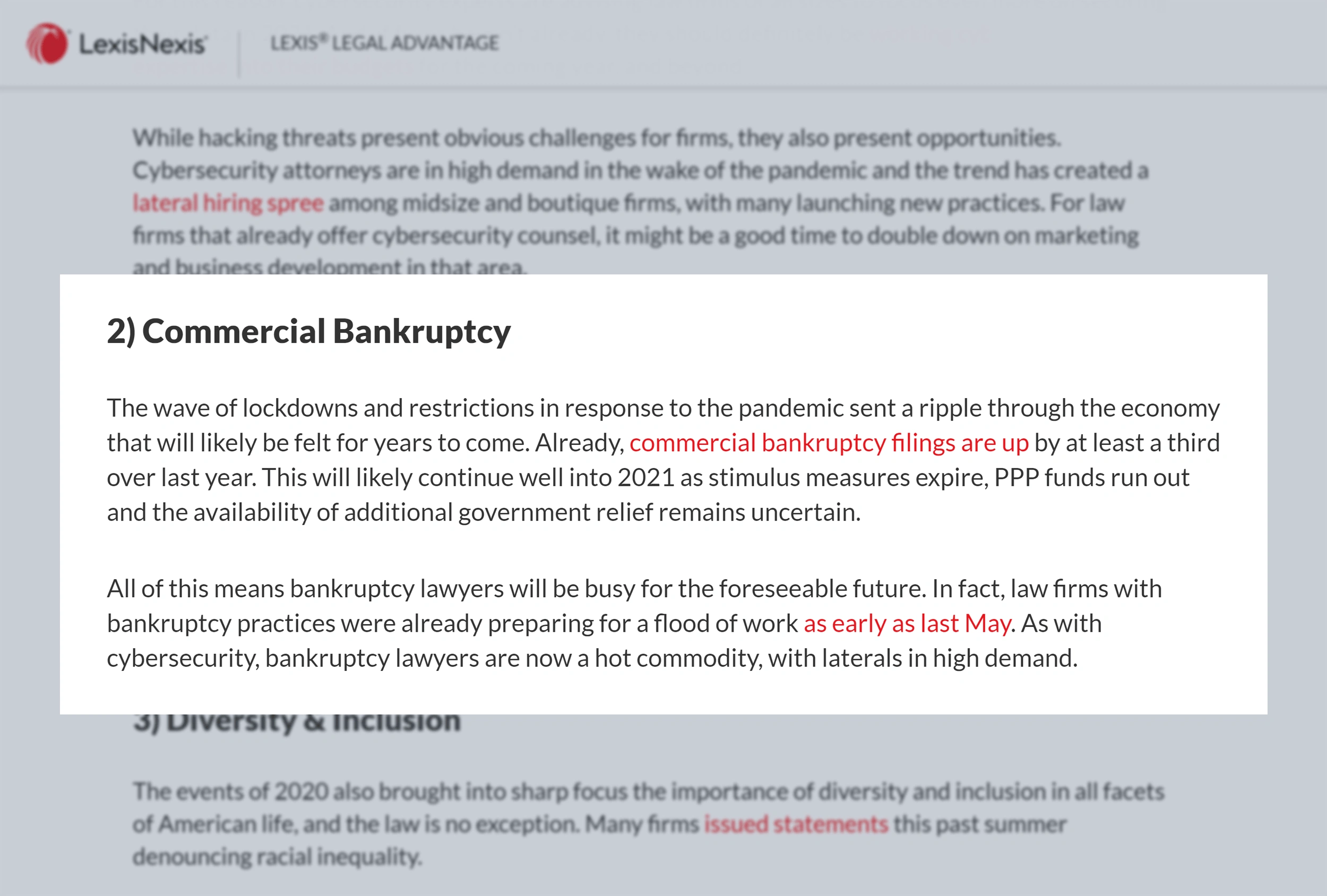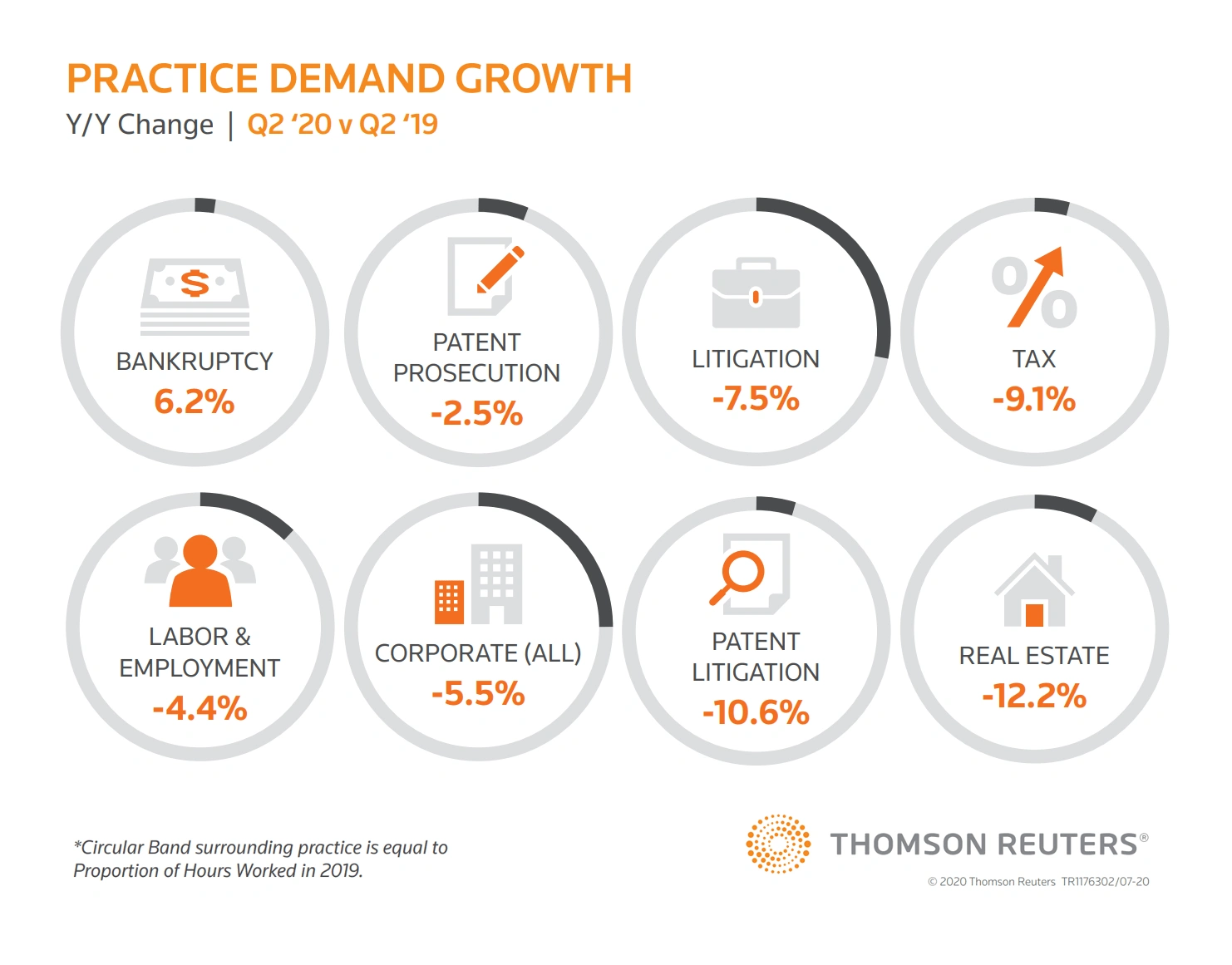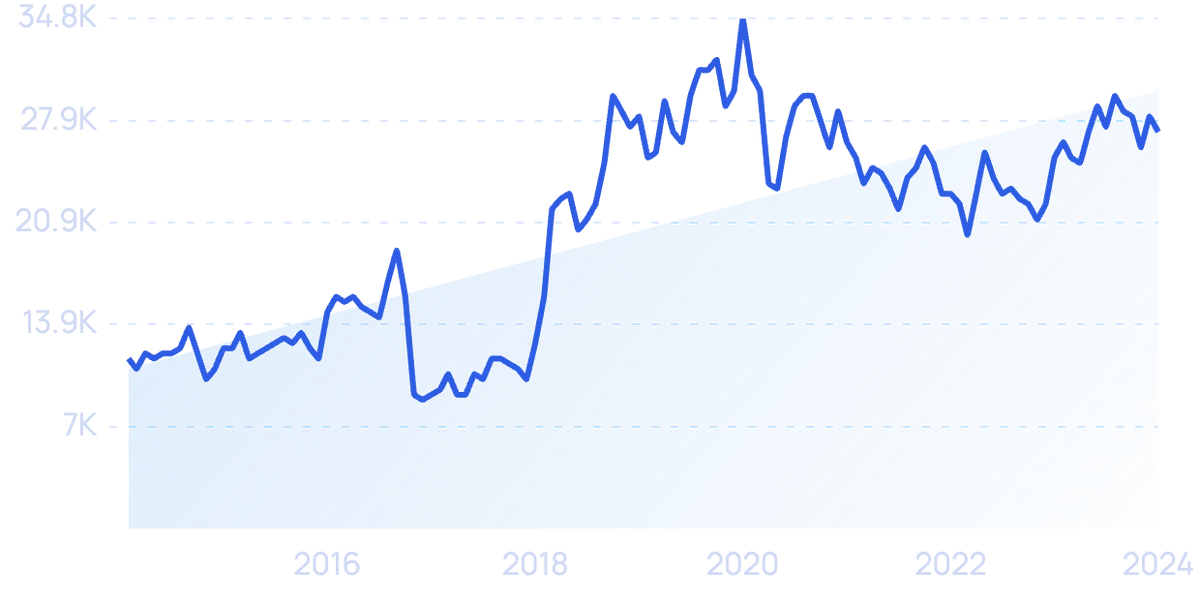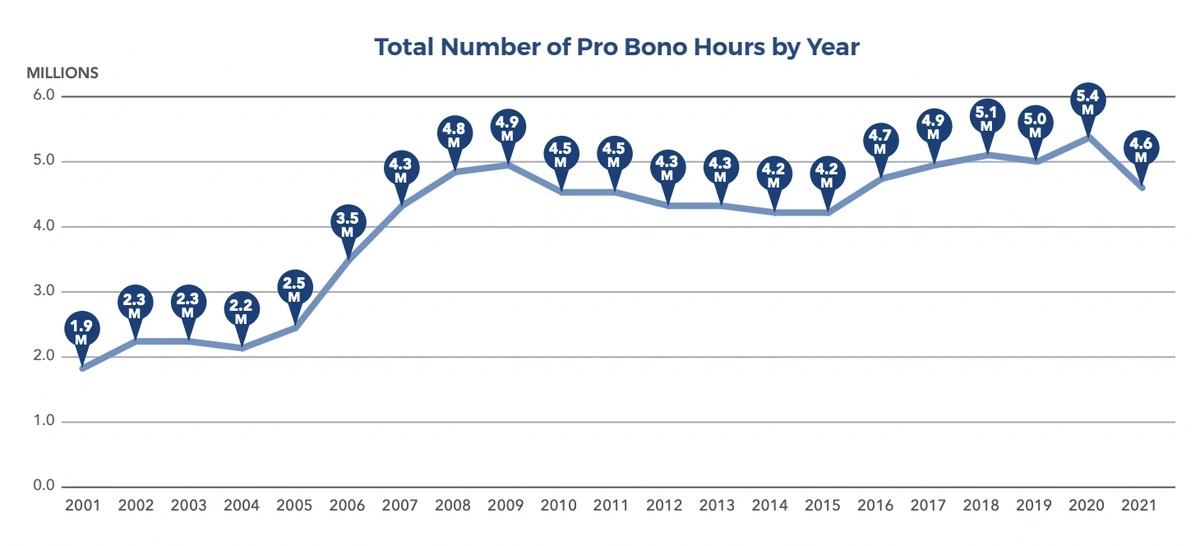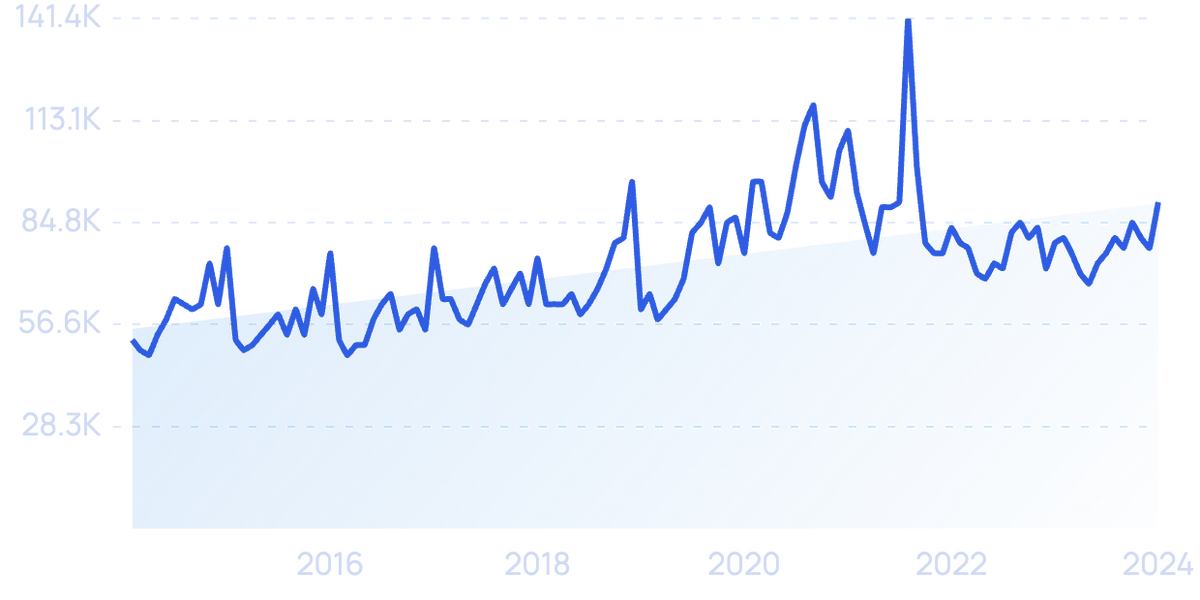
Top Legal Trends to Follow (2024-2026)
You may also like:
This is a list of important legal industry trends to watch in 2024-2026.
In the past, law firms have been known to take a cautious approach toward change.
But, as many realized in 2020, those who maintain the status quo may end up closing their doors.
This is why the legal industry is scrambling to update everything from workflows to hiring and more.
Learn about the most important of those changes right here.
1. Digital transformation changes the legal field
The legal space is changing fast.
And technology is largely driving these changes.
In fact, one recent report says that 76% of legal pros cite tech as one of the key drivers of change in the space.
Automation is one of the key ways legal professionals are using technology to become more efficient.
Documents, research, analysis, transcription, and billing are all expected to become automated processes in the near future.
Searches for "document automation" are up 138% over the last 10 years.
The speed of technology adoption is speeding up, too.
The ABA Profile of the Legal Profession recently reported that only 10% of lawyers say their firms are currently using artificial intelligence tools.
But 36% of lawyers say that AI tools will be mainstream within the next five years.
Several private businesses, like iManage, are already offering AI solutions for legal practices.
Search growth of the term "iManage" in Google has increased by 256% in 5 years.
But the increased dependence on technology comes with increased risk.
The ABA’s 2019 Legal Tech Report said that 26% of the participating firms had experienced a cybersecurity breach.
In 2020, a handful of law firms became victims of ransomware attacks in the first month of the year. In two of the cases, client information was posted online.
Law firms are largely adopting technology. But data breaches are one potential risk associated with this shift.
In addition to altering the way lawyers work within the system, technology is also changing how the public interacts with the legal system.
Nearly every court in America adopted virtual platforms to conduct hearings during the pandemic.
The National Center for State Courts has said, “[Judges] believe it will be an important tool long after the pandemic ends because of its potential to save time and money and increase convenience for litigants”.
Searches for "virtual court" are quickly growing (2,900% in 5 years).
The transparency of the legal system is also being dramatically altered by technology.
According to Fix the Court, early in 2020, only four federal appeals courts ever live-streamed arguments in their court - and they didn’t do it very often.
But now, all 14 federal appeals courts made plans to livestream.
It’s clear that the public craves this kind of transparency in the legal process, especially with high-profile cases.
Fix the Court reported that more than 880,000 people listened to the audio feed of President Trump’s tax records case in May 2020.
The organization also found that 70% of the people they surveyed would like the live streaming of court cases to continue into the future.
2. Legal case volume continues to fluctuate
According to a research brief released by Clio in September 2020, law practice billing volume was down 11% year-over-year in August 2020.
The brief also showed that states with an increase in COVID cases struggled to get their caseloads back up to pre-COVID levels.
Legal caseloads are starting to recover. However, they're still down compared to pre-pandemic levels.
The Clio brief also reported that 67% of respondents said that they’ve put off legal issues during the pandemic.
These individuals are waiting until their legal needs become urgent or until they feel health precautions have made it safe to meet with an attorney.
This could directly impact caseloads in 2024 and beyond.
The only question is when the uptick might hit.
Along with private individuals, the legal needs of businesses are expected to increase in the coming years, too.
In October 2020, Reuters reported that there had been 5,529 Chapter 11 bankruptcy filings that year. That’s an increase of 33% over the first three quarters of 2019.
According to data from the Administrative Office of the US Courts, September 2022's annual bankruptcy filings totaled 383,810.
Bloomberg Law reports that the standard language of contracts is presenting huge problems in today’s world.
Breach of contract lawsuits, including class-action lawsuits, are already on the rise. And legal analysts expect the trend to continue.
LexisNexis predicts that the surge in bankruptcy filings could continue this year.
They cite the end of PPP funds and the uncertainty of future government bailouts as reasons.
Many predict that bankruptcy filings could see an uptick once federal government bailouts dry up.
The head of Davis Polk’s Tax Department, David Schnabel, predicted that 2021 would be a huge year for tax attorneys, too.
He says that the IRS and Treasury Department continue to release rules and guidance on tax cuts.
3. Firms emphasize becoming recession-proof
The legal sector has been historically impervious to change, except for during significant economic downturns.
As the American Bar Association says, “Most changes in the profession coincide with downturns or recessions that go way back to the 1960 recession... Almost every recession has coincided with some significant change in the profession”.
August 2020 statistics from Thomson Reuters showed that the legal market had suffered the largest quarterly drop in performance since 2009.
Data shows that the demand for legal services dropped significantly during the pandemic.
Overall, demand for legal services dropped nearly 6% year-over-year.
The report showed that the worst-performing practice areas were real estate (dropping 12.2%), tax work (dropping 9.1%), litigation (dropping 7.5%), and corporate work (dropping 5.5%).
In the 2008 recession, law firms prioritized stability over expansion, and departments like M&A and finance shrank considerably.
In today’s economic downturn, larger firms are expected to fare better than smaller firms.
That's mostly because of their ability to reassign attorneys to various business units and lay off staff in order to save expenses.
As law firms seek to survive and even thrive during this recession, they’ll put their focus on where the profitable cases are right now: bankruptcy, cybersecurity, and employment law.
As LexisNexis stresses, firms “have to look beyond cost-cutting and make strategic changes. Having the right practice groups could help them become more resilient”.
Corporate law cases may ultimately prove to be recession-proof.
In 2020, Kirkland & Ellis took in more than $14 million just in advance payment retainers during Neiman Marcus’ Chapter 11 bankruptcy case.
Court documents show the firm was billing upwards of $1,900 per hour for their work on the case.
That high hourly rate is, of course, not the norm among bankruptcy lawyers.
But the demand for attorneys specializing in this area is universal.
In fact, the ABA Journal reports that legal headhunters have been poaching bankruptcy lawyers.
Searches for "corporate lawyer" are on the rise (133% in 10 years).
4. Pro bono work continues to grow
A 2022 report reveals the number of firms with pro bono partners is at an all-time high.
Study results from 2019 showed that the average lawyer spends what would be 60 billable hours per year on pro bono work.
According to the Pro Bono Institute, overall pro bono hours have largely been on a steady climb since 2015: 4.2 million hours in 2015 to 5.4 million hours in 2020.
Pro bono work has been on the rise over the last two decades.
International law firm Paul Weiss reports that in addition to having great profitability in 2020, the firm’s pro bono hours have nearly doubled in the year.
As the recession continues, the demand for pro bono legal services increases.
With housing renters owing upwards of $34 billion in back rent, millions of people are seeking legal representation but do not have the means to pay for it.
The ABA has been desperately urging leaders to mobilize pro bono lawyers for this unmet civil legal need.
Searches for "eviction" spiked in 2021.
One tech company is trying to make matching lawyers with pro bono cases easier.
Paladin is software in which law firms sign up, list pro bono opportunities for their attorneys, and allow them to take the cases with just a click of a button.
Conclusion
We hope you learned something new from this list of critical legal trends for 2024 and beyond.
The current emphasis on digital automation, freelancing, remote work, and the downturn in the economy is ushering in some major changes for almost every industry.
Law firms are being forced to grapple with how they can remain relevant and profitable in today's digital world. And with the legal landscape changing along with it.
You can use our analytics tool to view the most-visited websites in the legal space. In fact, you can explore the top websites for more than 50 industries.
Stop Guessing, Start Growing 🚀
Use real-time topic data to create content that resonates and brings results.
Exploding Topics is owned by Semrush. Our mission is to provide accurate data and expert insights on emerging trends. Unless otherwise noted, this page’s content was written by either an employee or a paid contractor of Semrush Inc.
Share
Newsletter Signup
By clicking “Subscribe” you agree to Semrush Privacy Policy and consent to Semrush using your contact data for newsletter purposes
Written By


Josh is the Co-Founder and CTO of Exploding Topics. Josh has led Exploding Topics product development from the first line of co... Read more

